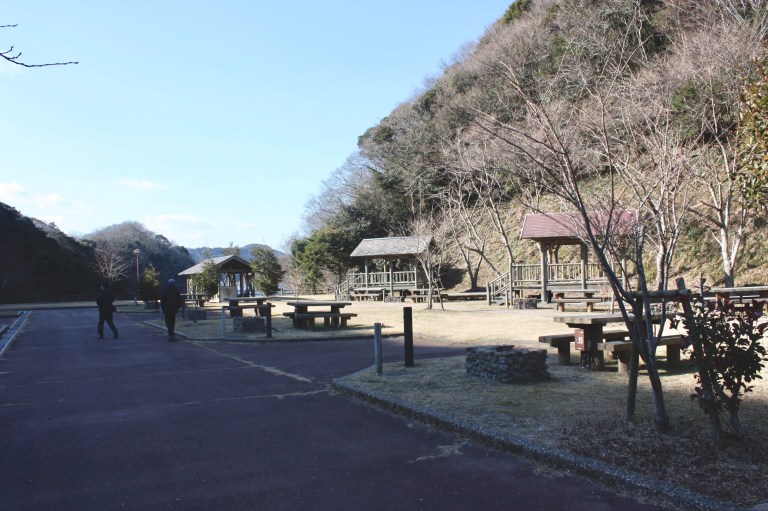2.025
30 (Sun) January 2011
Sashimi
4.0
from Tsushima Brasserie
at Aso Bay Camp
-Tsushima, Nagasaki, Japan-
with Backcountry Camping
Camping Trip in Japan, Day 2.
- Day 1 (2.024 Sambal-Soy-Soju Shrimp)
In Tsushima. With members of the Backcountry Camping group, we are camping out on the island for two nights. Flew in at the crack of dawn Saturday, flying back Monday evening. GMTD is excited to present this first series of posts from overseas.



We spent the day touring the island, including beaches, trekking trails across streams, camp sites, shinto shrines, all immaculate and beautiful, all completely deserted of human beings except us.


Earlier that day, we had lunch at another local restaurant whose name I never bothered to get. The meal was similar to yesterday’s bento, only not in the box. And even smaller in portion, we initially thought the dishes were appetizers. We got what we paid for: the lunch was included in our cheapo tour package that cost 340,000 won for roundtrip airfare, 2 nights of campsite fees, tour bus, as well as 3 lunches. At least they gave us free refills on the rice and miso soup.
I am happily surprised that the lunch restaurants have both been Japanese, as Korean group tours to foreign countries typically offer at least one if not all of the meals at Korean restaurants. Partly, this is because Koreans get a kick out trying their own food overseas, and complaining about the lack of authenticity. But mostly it’s because Koreans are extremely stubborn in their eating habits and can’t really handle “exotic” cuisines very well. Travel-sized kimchi packets and gochujang tubes are sold at airports for those who insist on adding a taste of home to the food when the restaurant isn’t Korean. I wonder if Americans ever travel with ketchup packets.
To visit Japan and not eat sashimi would’ve been inconceivable.
On our way back to the campsite, we dropped by Tsushima Brasserie – a local pub – and ordered 17 assorted sashimi platters to go, one for each of us. An additional out-of-pocket expense of merely 1,000 yen per platter, totally worth it. Five varieties of fish: yellowtail, tuna, halibut, mackerel, and red snapper. Supposedly, all ocean-caught fish. Regardless of origin, it was the freshest, sweetest sashimi that I’ve had in recent memory, perhaps ever.

At dinnertime, our team annexed a semi-enclosed structure on the campgrounds that house a number of sinks for washing dishes and several barbecue pits.



In addition to the built-in tables and the electric lighting that we borrowed from the administrative office, the fire that we built in one of the pits made the set-up relatively comfortable. The temperature wasn’t that bad, about 0 degrees centigrade, but the piercing winds that still got through were painful. (Two of the other teams braved the outdoors completely, while another team gave up the pretense of camping altogether and took refuge in the children’s playroom above the restrooms.)

Also on the menu for our team: edamame, barbecued pork bellies, and pork shabu shabu. The edamame was my idea, just to keep it as Japanese as possible. The pork bellies, just because Koreans always have to have pork bellies when camping, especially when there’s a fire going. The shabu shabu, which I thought would be overly complicated and unnecessary, actually turned out to be an excellent idea: the pot of constantly boiling stock gave us a welcome source of heat, while the hotpot modality allowed each of us to quickly cook and eat a piece of meat/seafood/vegetables whenever we felt like it throughout the evening; after a couple hours, the resulting indefinable and irreplicable broth was perfect for noodles to finish off the cold evening.
So much fun.


I also made sure that the beverages, at least for me, remained strictly local during the trip. While most of the others drank Korean soju, I stuck with Suntory Whisky. In yesterday’s post, I alluded to the fact that Koreans tend to stick with Korean food when abroad, and the same apparently holds true with drink. Again, I don’t know whether it’s because they’re unfamiliar with foreign alcohol and don’t want to experiment, or it’s because they truly prefer Korean booze even when given a choice.




